Dominique Luchart's Blog, page 581
June 30, 2021
LG’s Mini LED TVs to release in the US starting in July,

LG’s new range of Mini LED TVs, which it’s branding “QNED,” are releasing worldwide starting next month, the company has announced. The lineup consists of three sets, the 8K QNED99 and QNED95, and the 4K QNED90, ranging in size from 65- to 86-inches. LG says the TVs will launch first in North America, with additional regions following “in the weeks ahead.”
Mini LED is a relatively new kind of display technology which uses an array of thousands of tiny LEDs as a screen’s backlight. Because there are so many (up to 30,000 in the case of the 86-inch QNED99), they can create a sharper contrast between light and dark areas of an image. LG says the technology, which has previously been used on some TVs from TCL as well as Apple’s latest 12.9-inch iPad Pro, allows for “10 times better contrast ratio” than normal LCD TVs.
LG is marketing Mini LED as a “giant leap forward in LCD TV picture quality,” but it’s not quite at the level of an OLED TV, where its the individual pixels themselves that are illuminating to create an image (with Mini LED, the LEDs are still shining through an LCD layer). Mini LED should not be confused with Samsung’s outrageously expensive MicroLED technology, which also uses an array of tiny LEDs but without the need for an LCD layer at all.
We’ve reached out to LG to clarify pricing for its full lineup of QNED TVs (LG’s US site still lists them as “coming soon”) but based on a previous report from FlatPanelsHD they’re unlikely to come cheap. The 8K QNED99 will reportedly start at $5,000 for the 75-inch model, rising to $8,000 for the 86-inch version, while the 4K QNED90 will reportedly cost up to $4,000 for the 86-inch model.
The post LG’s Mini LED TVs to release in the US starting in July, appeared first on NEWDAWN Blog.
June 29, 2021
Apple isn’t backing down from its hybrid work model, according to internal note,

Apple isn’t backing down from its hybrid work model that will require most employees to return to the office three days a week starting in early September. Fully remote positions will be extremely limited.
“We believe that in-person collaboration is essential to our culture and our future,” said Deirdre O’Brien, senior vice president of retail and people, in a video recording viewed by The Verge. “If we take a moment to reflect on our unbelievable product launches this past year, the products and the launch execution were built upon the base of years of work that we did when we were all together in-person.”
The news comes nearly a month after Apple CEO Tim Cook sent out an email telling employees the company was rolling out a new work model that would require them to return to in-office work on Mondays, Tuesdays, and Thursdays starting in the fall.
In the wake of that announcement, Apple employees wrote a letter saying some employees had been forced to quit because of the policy, and asking Cook to change his stance. They asked that all teams be given the option to work remotely, noting “without the inclusivity that flexibility brings, many of us feel we have to choose between either a combination of our families, our well-being, and being empowered to do our best work, or being a part of Apple.”
Now, Apple is essentially denying that request, saying any remote work decisions will be made “on a case-by-case basis with any new remote positions requiring executive approval.”
The post Apple isn’t backing down from its hybrid work model, according to internal note, appeared first on NEWDAWN Blog.
The second wave of ‘Star Wars: The High Republic’ novels is here. Here’s what to know., ,

Earlier this year, Disney Lucasfilm Press rolled out the first wave of “Star Wars: The High Republic” books and comics that introduced a fresh roster of heroes and villains bounding and battling across the galaxy.
These intertwined “Star Wars” stories were spread across multiple publishing platforms and occurred during the Golden Age of the Jedi Knights when the light-sabered warriors were the legendary protectors of the Republic at its glorious height.
Now Disney has announced the next phase of this publishing endeavor that centers around the continuing saga set 200 years prior to “The Phantom Menace” by releasing covers, catalog descriptions, and on-sale dates for three more “The High Republic” novels serving the Middle Grade, Young Adult, and Adult markets.
First into hyperspace on June 29 is the Middle Grade title, “Race To Crashpoint Tower” (Disney Lucasfilm Press, 2021), by Daniel Jose Older.
[image error]
The cover for “Race to Crashpoint Tower” by Daniel Jose Older. (Image credit: Disney Lucasfilm Press)[image error]
Star Wars :The High Republic: Race to Crashpoint Tower:
$11.99 at Amazon (Save 20%)
Join Jedi Padawan Ram Jomaram on Valo, where he stumbles across a huge threat to the planet and Republic Fair, but can he make it to the titular tower?
Here’s the official description at StarWars.com:
“The Republic Fair is coming! Visitors from all over the galaxy are traveling to the planet Valo for a massive, awe inspiring festival celebrating the Republic. While his fellow Valons prepare for the fair, Jedi Padawan Ram Jomaram is hiding out in his favorite place: a dingy garage filled with mechanical parts and tools. But when a security alarm goes off on the nearby hilltop nicknamed Crashpoint Peak, he ventures out with his trusty droid V18 to investigate.
“There he discovers that someone has knocked out Valo’s communications tower–a frightening sign that Valo, and the Republic Fair, are in danger. Sure enough, as Ram races to warn the Jedi, the dreaded Nihil unleash a surprise attack! It’s up to Ram to face down the enemy at Crashpoint Tower and send a call for help to the Republic. Luckily, he’s about to get some assistance from unexpected new friends.”
Also being launched on June 29 is Del Rey Books is the Adult release, “The Rising Storm“ (Disney Lucasfilm Press, 2021) by acclaimed British author Cavan Scott, who was co-creator behind Marvel’s “The High Republic” comic book series that dropped earlier this year.
[image error]
The cover for Cavan Scott’s “The Rising Storm,” which follows the events of “Light of the Jedi” in “Star Wars: The High Republic.” (Image credit: Disney Lucasfilm Press)[image error]
Star Wars: The Rising Storm (The High Republic): $20.28 at Amazon
Save 30% as you rejoin the heroes of the High Republic from “Light of the Jedi” as they head to The Republic Fair only to come face to face with the fearsome Nihil.View Deal
Per StarWars.com, the plotline unfolds as follows:
“Following the dramatic events of ‘Light of the Jedi,’ heroes of the High Republic era return to face a shattered peace and a fearsome foe. In the wake of the Great Hyperspace Disaster and the heroism of the Jedi, the Republic continues to grow, bringing more worlds together under a single unified banner.
“Under the leadership of Chancellor Lina Soh, the spirit of unity extends throughout the galaxy, with the Jedi and the newly established Starlight Beacon station at the vanguard. In celebration, the chancellor plans The Republic Fair, a showcase of the possibilities and the peace of the expanding Republic — a peace the Jedi hope to foster. Stellan Gios, Bell Zettifar, Elzar Mann, and others join the event as ambassadors of harmony. But as the eyes of the galaxy turn toward the Fair, so too does the fury of the Nihil.
“Their leader, Marchion Ro, is intent on destroying this unity. His storm descends on the pageantry and celebration, sowing chaos and exacting revenge. As the Jedi struggle to curb the carnage of the rampaging Nihil, they come face-to-face with the true fear their enemy plans to unleash across the galaxy — the kind of fear from which even the Force cannot shield them.”
Rounding out the trio of new “The High Republic” releases is the Young Adult book, “Out of the Shadows” (Disney Lucasfilm Press, 2021), by Justina Ireland on July 27. Ireland penned one of the first wave’s Middle Grade titles, “A Test of Courage” (Disney Lucasfilm Press, 2021).
[image error]
The cover for “Out of the Shadows” by Justina Ireland in the “Star Wars: The High Republic” series. (Image credit: Disney Lucasfilm Press)[image error]
Star Wars: Out of the Shadows (The High Republic): $14.30 at Amazon
Save 21% as you follow Sylvestri Yarrow as she tries to the keep her family cargo shipping business afloat and heads to Coruscant only to be waylaid by a galactic fued.View Deal
Check out the detailed synopsis from StarWars.com:
“Sylvestri Yarrow is on a streak of bad luck with no end of sight. She’s been doing her best to keep the family cargo business going after her mom’s death, but between mounting debt and increasing attacks by the Nihil on unsuspecting ships, Syl is in danger of losing all she has left of her mother. She heads to the galactic capital of Coruscant for help, but gets sidetracked when she’s drawn into a squabble between two powerful families over a patch of space on the frontier. Knee-deep in familial politics is the last place Syl wants to be, but the promise of a big payoff is enough to keep her interested.
“Meanwhile, Jedi Knight Vernestra Rwoh has been summoned to Coruscant, but with no idea of why or by whom. She and her Padawan Imri hitch a ride to the capital with Jedi Master Cohmac and his Padawan, Reath–and are asked to assist with the property dispute on the frontier. But why? What is so important about an empty patch of space? The answer will lead Vernestra to a new understanding of her abilities, and will take Syl back to the past…and to truths that will finally come out of the shadows.”
Disney Lucasfilm Press’ and Del Rey Books’ latest round of “The High Republic” novels arrive starting June 29.
Today’s best Star Wars deals
STAR WARS Episode I Racer -…
Amazon
$14.99
Star Wars: The Force Awakens…
Amazon
$15.07
Reduced Price
Star Wars: Squadrons -…
Amazon
$39.99
$22.89
Star Wars Squadrons – PC…
Amazon
$39.99
Show More Deals
We check over 250 million products every day for the best prices
Follow us on Twitter @Spacedotcom and on Facebook.
The post The second wave of ‘Star Wars: The High Republic’ novels is here. Here’s what to know., , appeared first on NEWDAWN Blog.
Zoom acquires an AI company building real-time translation,

Zoom has announced that it’s acquiring a company known as Kites (short for Karlsruhe Information Technology Solutions), which has worked on creating real-time translation and transcription software. Zoom says the acquisition is a move to help it make communicating with people who speak different languages easier, and that it’s looking to add translation capabilities to its video conferencing app.
According to its site, Kites began at the Karlsruhe Institute of Technology, and its technology was originally developed to act as in-classroom translation for students who needed help understanding the English or German their professors were lecturing in.
Zoom already has real-time transcriptions, but it’s limited to people who are talking in English. On a support page, Zoom also makes it clear that its current live transcription feature may not meet certain accuracy requirements. The company says it’s considering opening a research center in Germany, where the Kites team will be staying.
The post Zoom acquires an AI company building real-time translation, appeared first on NEWDAWN Blog.
Why your Roomba’s maddeningly random patterns actually make total sense – CNET,

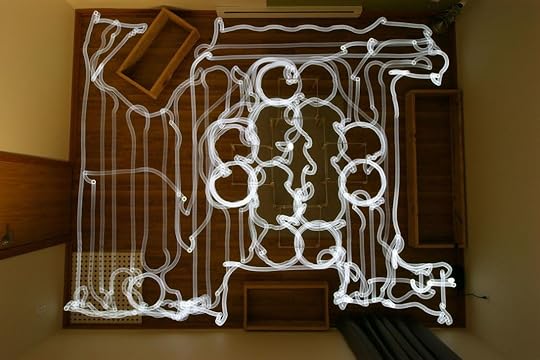 The way a robot vacuum travels around the room as it cleans really matters.
The way a robot vacuum travels around the room as it cleans really matters.Gianmarco Chumbe/CNET
Even an awful robot vacuum will remove at least some dirt from your floors. How much ground it covers, though, and its behavior moving through rooms will vary a great deal from model to model.
The most important factor behind this is a robot’s navigation system. Its navigation technology, together with software, determines a vacuum’s actions. That plays a massive role in how well a given robot cleans a space, or even hunts for garden weeds. As you might expect, some robot vacuums perform the task better than others.
Read more: How to prep your house so your robot vacuum won’t get stuck | The best robot vacuums of 2021
Fortunately, our robot vacuum testing room at our warehouse lab in Louisville, Kentucky, can help us show the differences between robot vacuums, including how well they perceive, interact and otherwise move around in a physical space.
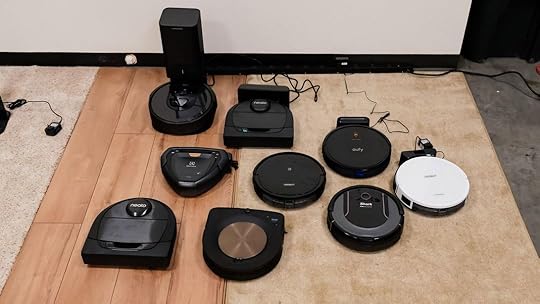 To break in our new test room, we ran nine current robot vacuum models across its floor.
To break in our new test room, we ran nine current robot vacuum models across its floor.Tyler Lizenby/CNET
Robot navigation on a budget
There are three main types of systems robot vacuum cleaners typically use to navigate a space. The first is a simple collection of collision, wheel, brush and cliff sensors. They tell robots when they hit or are about to hit objects. With that information, they can slow down or change course altogether. Additionally these sensors help vacuums avoid falls down flights of stairs.
You tend to find these systems in budget robot vacuums. The upside is they cost a lot less than more complex machines. The $250 Eufy Robovac 11S is an example of a product with this style of navigation.
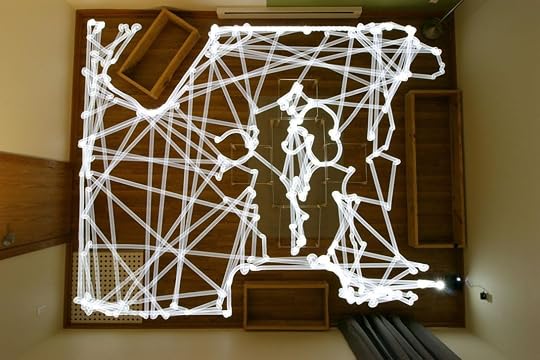 Basic robot vacuums equipped with collision and proximity sensors, like the Eufy RoboVac 11S Max here, bounce around obstacles to find their way, but miss a lot of open floor space.
Basic robot vacuums equipped with collision and proximity sensors, like the Eufy RoboVac 11S Max here, bounce around obstacles to find their way, but miss a lot of open floor space.Gianmarco Chumbe/CNET
The downside is that they operate in a random fashion, bumping into things and veering willy-nilly around the room. The very first iRobot Roombas did the same. Sadly that results in incomplete floor coverage. Spots in tight places (corners, table and chair legs) get lots of repeat attention. Open areas, however, are likely vacuumed once (or perhaps not at all) since the robot travels in a straight line until it detects something in its path.
 This image is designed to show the actual area the robot covered for cleaning. As you can tell, the Ecovacs Deebot 500 was very inconsistent.
This image is designed to show the actual area the robot covered for cleaning. As you can tell, the Ecovacs Deebot 500 was very inconsistent.Gianmarco Chumbe/CNET
These machines take a long time to run too, roughly three times as long as the most advanced robot vacuums need to attack the same area.
Sure, long clean times won’t matter much if you tend to vacuum when nobody’s home, and have all day to do it. When company is due to arrive in 45 minutes, or other time-limited situations, that’s a problem.
Visual or optical navigationOther robot vacuums combine the basic array of collision sensors with a main visual sensor that’s augmented by a lens. These vacuums use a navigation algorithm called VSLAM (or visual simultaneous location and mapping). The optical system can identify landmarks on the ceiling, as well as judge the distance between walls.
 The iRobot Roomba i7+ shows a more logical, thorough navigation path thanks to its optical technology.
The iRobot Roomba i7+ shows a more logical, thorough navigation path thanks to its optical technology.Gianmarco Chumbe/CNET
VSLAM also calculates the vacuum’s relative position in a room in real time, letting the bot create a map as it cleans. Robot vacuums that operate this way navigate a room with greater efficiency, systematically cleaning the floor in a logical pattern. They won’t waste time vacuuming areas of a room the robot knows it has already travelled over. As a result, they can cover the same area in a shorter time, and with better coverage than a robot based only on physical sensors.
iRobot’s current line of Roombas, such as the $800 i7+ and $1,100 S9+, have this kind of navigation system. The same is true of higher-end Ecovac models like the $400 Deebot 711.
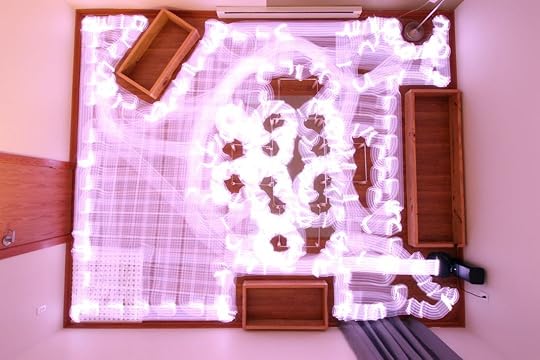 That optical navigation translates to much more thorough coverage across our test room floor.
That optical navigation translates to much more thorough coverage across our test room floor.Gianmarco Chumbe/CNET
Visually driven robot vacuums have a few drawbacks. Since their optical sensors need at least some amount of ambient light present, they have trouble finding their way in completely dark rooms. Compared with basic models, you’ll pay extra for these more intelligent robots too.
Laser navigationAnother way robot vacuums can sense their environment is with lidar (light detection and ranging). It’s the same sort of technology you’ll find in many self-driving car prototypes such as those from Waymo and Uber. All Neato Botvacs use this method, including the $500 Botvac D7 Connected.
Here’s a view of the Neato Botvac D6 Connected using its laser LIDAR SLAM system in our test room.Gianmarco Chumbe/CNET
Top-tier Ecovac Deebots like the $579 Ozmo 930 have built-in lidar too. In this sophisticated system, a turret-based laser mounted on the top of the robot vacuum illuminates objects to help the robot figure out their location and distance. Vacuums equipped with lidar can also detect the size and shape of things in their path.
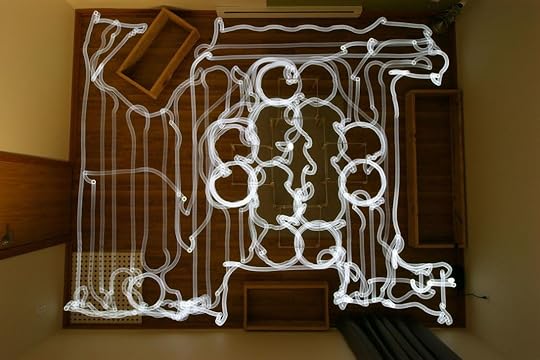 Guided by lidar, the navigation pattern of Neato’s Botvac D6 was very systematic, optimizing its pathing to get the job done completely, and in a short amount of time.
Guided by lidar, the navigation pattern of Neato’s Botvac D6 was very systematic, optimizing its pathing to get the job done completely, and in a short amount of time.Gianmarco Chumbe/CNET
They actively scan their surroundings too. That’s why these machines tend to cover floors with extreme efficiency For instance, both the Neato Botvac D7 and Botvac D6 cleaned our test room floor in just under 21 minutes.
The SharkNinja Ion S87, with its basic navigation, spent 1 hour and 9 minutes cleaning the floor of our test room. Likewise, two budget Ecovacs machines, the $250 Deebot 500 and Deebot 600, both had cleaning times of over 1 hour (60 and 64 minutes respectively). The longest though was the $160 Eufy RoboVac 11S Max (100 minutes, 34 seconds), also the cheapest model in this group.
 Even with a pathing plan that looks sparse, the Neato Botvac D6 managed to cover essentially the entire test room floor.
Even with a pathing plan that looks sparse, the Neato Botvac D6 managed to cover essentially the entire test room floor.Gianmarco Chumbe/CNET
Shorter runtime isn’t the only benefit to lidar. Paired with the SLAM (or simultaneous location and mapping) algorithm, these robots also create detailed maps on the fly. You can perform useful interactions with those maps too. For instance, you can drop virtual boundaries within them, or make restricted zones at will for the robot to avoid. These vacuums also navigate in the dark if necessary. All that is great. Just remember you’ll pay a premium for these machines. They typically occupy the ultra-high-end rung of the market.
Hybrid systemsA new approach a few robot vacuums take is to combine multiple navigation technologies into one system. That includes brush, cliff, wheel and optical sensors, as well as laser emitters. There aren’t that many products that do this at the moment.
One you can buy today is the $499 Electrolux Pure i9. This unique robot vacuum is equipped with a pair of front-firing lasers. Sitting in the middle of them, on the vacuum’s front face, is also a big optical sensor behind a lens.
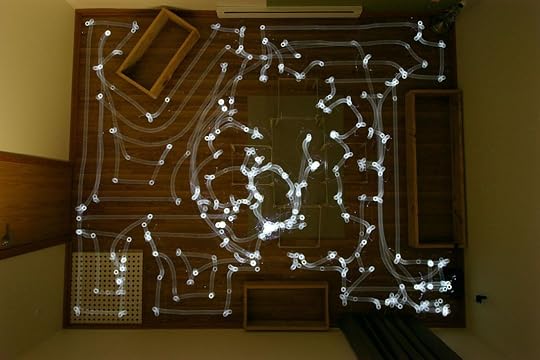 The Electrolux Pure i9, using a hybrid navigation and sensor system, definitely missed areas of our test room floor.
The Electrolux Pure i9, using a hybrid navigation and sensor system, definitely missed areas of our test room floor.Gianmarco Chumbe/CNET
Even with all that tech, the Pure i9’s movement through our test room appeared confused. It didn’t roll along confidently like the Neato and Roomba machines. Instead it muddled through it in fits and starts, constantly pivoting in different directions.
The Electrolux Pure i9 uses a hybrid optical and laser navigation system. Even so, it often looked confused rolling across our test room floor.Brian Bennett/CNET
With so many tools, as well as enhanced software and processing power, robots with hybrid navigation have the potential to offer unheard of levels of automation and intelligence. I think the upcoming Ecovacs Deebot Osmo N8 ProPlus looks especially promising. Ecovacs says the vacuum will be able to actually identify and avoid objects like shoes, clothing and piles of toys.
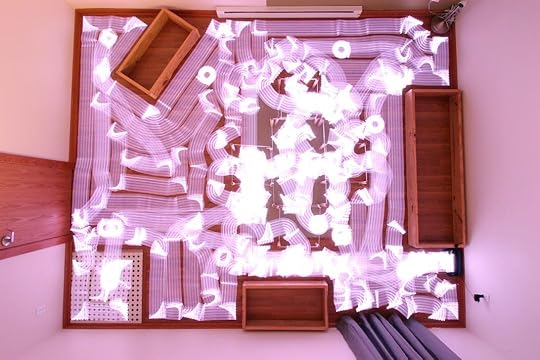 Robot vacuums with hybrid sensor systems have promise. The Electrolux Pure i9 is one, but it didn’t cover our test room floor as well as other machines.
Robot vacuums with hybrid sensor systems have promise. The Electrolux Pure i9 is one, but it didn’t cover our test room floor as well as other machines.Gianmarco Chumbe/CNET
And the company says the robot’s AI-based recognition will learn new objects over time. Perhaps that list will include pet messes and other wet, goopy or sticky debris. That would be a welcome update, potentially saving your flooring and your carpet from becoming even messier than before the robot vacuum started cleaning.
A note on our robot vacuum testing roomWe’ve conducted straight-line, cleaning performance-based tests for robot vacuums in the past, but that really only tells part of the picture about how well a robot vacuum will clean your home. How well it can navigate a space, how much area it actually covers and how long it takes are all important factors, too.
To help us capture that information, we built an industry-standard testing room, as specified by the International Electrotechnical Commission (IEC), the international standards body that, among other things, governs robot vacuum testing methods for manufacturers.
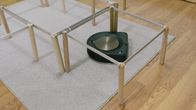
Now playing:
Watch this:
Lasers, sensors and robots, oh my: Some robot vacuums…
3:43
Inside our test room are objects and challenges designed to mimic what a robot will encounter as it cleans a room. That includes constructs designed to mimic large furniture like sofas or dressers, smaller objects like lamps or table and chair legs, and even surface irregularities like carpets, transitions between flooring and electrical cords.
A camera mounted above captures a bird’s-eye view of all the action. From there we can figure out the path each vacuum takes during its cleaning cycle. This system also allows us to calculate how much of the floor a machine actually covers, and the time it takes to do it.
Some robot vacuums have a better sense of direction than others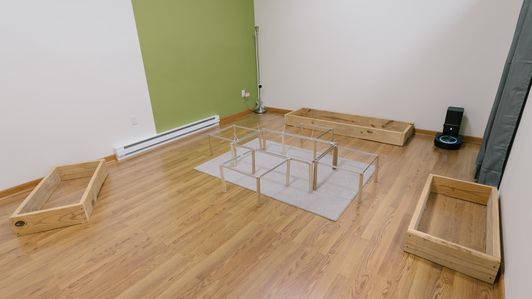
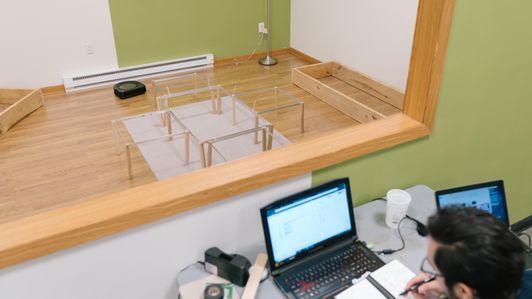
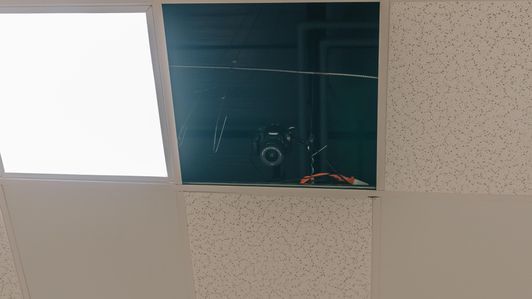
+12 More
Look for more robot vacuum testing from us in the near future. For now, we can at least say conclusively that not all robot vacuums are the same, and the way a bot navigates around a room will impact not only its cleaning performance, but also how long it takes to get the job done.
Vacuum Cleaners
The post Why your Roomba’s maddeningly random patterns actually make total sense – CNET, appeared first on NEWDAWN Blog.
Roku launches its new originals with a Demi Lovato talk show,

The first of a dozen-plus Roku Originals to premiere on the Roku Channel will kick off July 30th with The Demi Lovato Show, a series that had originally been slated for a debut on Quibi.
The show will now launch as Roku’s first “original” to land on the Roku Channel, the platform’s free and ad-supported streaming offering. While originally intended for Quibi, the show will be brand new to audiences when it arrives on the Roku Channel this week. Each episode will be 10 minutes long, feature a celebrity guest, and will cover topics as wide-ranging as UFOs, activism, mental health, gender identity, and police reform.
In a statement, Lovato said that they have “never been one to shy away from speaking candidly about things.” The show had previously been announced as Pillow Talk with Demi Lovato on Quibi, though it never aired.
Roku swiped much of Quibi’s library after the service finally folded and announced in April that it would rebrand the haul as Roku Originals. The company further said at the time that some 75 titles would stream on the Roku Channel as free and ad-supported content.
A spokesperson confirmed to The Verge that while some of these earlier released shows technically made their way to the Roku Channel in May, others have not been previously released, including this one. That makes The Demi Lovato Show the first Roku Original debuting on The Roku Channel to date.
It’s almost as if Quibi never truly left.
Correction: An earlier version of this article used pronouns other than Lovato’s preferred “they/them.” We regret the error.
The post Roku launches its new originals with a Demi Lovato talk show, appeared first on NEWDAWN Blog.
TP ICAP, the world’s largest interdealer broker, says it is launching a cryptocurrency trading platform with Fidelity Investments and Standard Chartered (Reuters)
The post TP ICAP, the world’s largest interdealer broker, says it is launching a cryptocurrency trading platform with Fidelity Investments and Standard Chartered (Reuters) appeared first on NEWDAWN Blog.
On This Day in Space! June 29, 1971: 3 Cosmonauts lost in Soyuz 11 tragedy, ,
On June 29, 1971, a Soviet space mission ended in tragedy when three Russian cosmonauts were found dead inside their spacecraft after returning to Earth.
Inside the Soyuz 11 space capsule were cosmonauts Vladislav Nikolayevich, Viktor Ivanovich Patsayev, and Georgi Timofeyevich Dobrovolskiy. They were the only crew to ever board the world’s first space station, Salyut 1.
[image error]
Soyuz 11 cosmonauts Viktor Patsayev, Georgi Dobrovolsky, and Vladislav Volkov are shown in a flight simulator in this photo. (Image credit: NASA)They launched on June 6, 1971 and spent 23 days doing science experiments aboard the space station before heading back to Earth. The reentry seemed to be going according to plan until the recovery team opened the capsule. Investigators believe the crew had become asphyxiated when a ventilation valve rattled open, causing the cabin to depressurize.
Catch up on our entire “On This Day In Space” series on YouTube with this playlist.
[image error]
History of NASA: $22.99 at Magazines Direct
Discover the story of how and why NASA was created, its greatest triumphs, darkest days, and of the times it exceeded all possible hopes. A tale of adventure, heroism and resourcefulness, learn of the space agency’s greatest achievements and how — over six decades — the organization has consistently and tirelessly devoted itself to its founding principle: that “activities in space should be devoted to peaceful purposes for the benefit of all humankind”. View Deal
Still not enough space? Don’t forget to check out our Space Image of the Day, and on the weekends our Best Space Photos and Top Space News Stories of the week.
Email Hanneke Weitering at hweitering@space.com or follow her @hannekescience. Follow us @Spacedotcom and on Facebook.
Join our Space Forums to keep talking space on the latest missions, night sky and more! And if you have a news tip, correction or comment, let us know at: community@space.com.
The post On This Day in Space! June 29, 1971: 3 Cosmonauts lost in Soyuz 11 tragedy, , appeared first on NEWDAWN Blog.
The 10 weirdest moons in the solar system, ,
All About Space
[image error]
(Image credit: Future)This article is brought to you by All About Space .
All About Space magazine takes you on an awe-inspiring journey through our solar system and beyond, from the amazing technology and spacecraft that enables humanity to venture into orbit, to the complexities of space science.
All but two of our solar system‘s planets have natural satellites of one sort or another. Earth’s own moon, a beautiful but stark, dead world shaped by ancient volcanoes and countless impact craters, is undoubtedly the most familiar, but it’s far from being the most interesting. Each of the outer solar system’s giant planets is accompanied by a large retinue of satellites, many of which formed at the same time and from the same ice-rich material as the planets that host them. Although far from the sun and starved of solar heat and light, they nevertheless show as much variety as the planets themselves.
Here, we take a trip to visit some of the strangest and most exciting of these astonishing worlds. Some, such as Jupiter’s Callisto and Saturn’s Mimas, have been frozen solid for billions of years, but bear extraordinary scars from exposure to bombardment from space. Others, such as Saturn’s shepherd moons Pan and Atlas and Neptune’s lonely Nereid, have been affected throughout their history by interactions with their neighbors. Most excitingly, some of these exotic worlds have been heated by powerful tidal forces from their parent planets, triggering phases of violent activity like those which shaped Miranda, Uranus’ Frankenstein moon. In some cases these forces are still at work today, creating fascinating bodies such as Jupiter’s tortured Io and Saturn’s icy Enceladus, whose placid exterior may even hide the greatest secret in the solar system: Extraterrestrial life itself.
Enceladus[image error]
Plumes of water can be seen bursting out of fissures at the south pole of Saturn’s moon Enceladus. (Image credit: NASA/JPL/Space Science Institute)Since NASA’s Cassini probe arrived at Saturn in 2004, the ringed planet’s small inner satellite, Enceladus, has become one of the most intensely studied and debated worlds in the entire solar system. It owes its new-found fame to the discovery of huge plumes of water ice erupting into space along fissures in its southern hemisphere — a sure sign of liquid water lurking just beneath the moon’s thin, icy crust.
The strange activity of Enceladus was suspected before Cassini’s arrival thanks to earlier images that showed the moon has an unusually bright surface and craters that look like they are blanketed in snow. Nevertheless, the discovery of the ice plumes–initially made when Cassini flew straight through one–was a spectacular confirmation that Enceladus is an active world.
With a diameter of 313 miles (504 km) and a rock/ice composition, Enceladus should have frozen solid billions of years ago, like many of its neighbors in the Saturnian system. But tidal forces caused by a gravitational tug of war between Saturn and a larger moon, Dione, keep the moon’s interior warm and active, making it a prime target in the hunt for life in the solar system.
While much of the water ice falls back to cover the surface, a substantial amount escapes from the weak gravity and enters orbit around Saturn. Here, it spreads out to form the donut-shaped E Ring — the outermost and sparsest of Saturn’s major rings.
Callisto[image error]
This image of Callisto was taken from NASA’s Galileo spacecraft. (Image credit: NASA/JPL/DLR)The outermost of Jupiter‘s Galilean moons, Callisto is the third-largest moon in the solar system, and is only slightly smaller than Mercury. Its main claim to fame is the title of most heavily cratered object in the solar system; its dark surface is covered in craters down to the limit of visibility, the deepest of which have exposed fresh ice from beneath and scattered bright ‘ejecta’ debris across the surface.
Callisto owes its cratered surface to its location in the Jupiter system — the giant planet’s gravity exerts a powerful influence, disrupting the orbits of passing comets and often pulling them to their doom, most spectacularly demonstrated in the 1994 impact of Comet Shoemaker-Levy 9.
Jupiter’s larger moons are directly in the firing line, and end up soaking up more than their fair share of impacts, but Callisto’s inner neighbors — influenced by greater tidal forces — have all experienced geological processes that wiped away most of their ancient craters. Callisto’s surface, however, has remained essentially unchanged for more than 4.5 billion years, developing its dense landscape of overlapping craters across aeons.
Dactyl[image error]
Dactyl imaged by NASA’s Galileo Orbiter. (Image credit: NASA / JPL / Ted Stryk)243 Ida, an asteroid designated as a minor planet, has a moon, measuring just 0.99 miles (1.6 km) across on its longest axis. Thanks to the larger asteroid’s weak gravity, Dactyl is unlikely to be an object captured into orbit, but the alternative — that Ida and Dactyl formed alongside each other — raises as many questions as it answers.
Ida is a major member of the Koronis family of over 300 asteroids, all of which share similar orbits. The family is thought to have formed 1 or 2 billion years ago during an asteroid collision. Dactyl could be a smaller fragment of debris from the collision that ended up in orbit around Ida, but there is a problem — computer models suggest Dactyl would almost certainly be destroyed by an impact from another asteroid.
So how can it be over a billion years old?
One theory is that the Koronis family is younger than it appears, and Ida’s heavy cratering is due to a storm of impacts triggered in the original break-up. Another theory is that Dactyl has suffered a disrupting impact, but has pulled itself back together in its orbit, as found by NASA — which might explain its surprisingly spherical shape.
Iapetus[image error]
Left-hand panel shows the moon’s leading hemisphere and the right-hand panel shows the moon’s trailing side. (Image credit: NASA/JPL-Caltech/Space Science Institute)Iapetus has two distinct claims to a place in any list of weird satellites. The first became obvious when it was discovered in 1671 — it is much dimmer when seen on one side of its orbit compared to the other. Its leading hemisphere–the half that faces ‘forwards’ as it orbits Saturn–is dark brown, while its trailing hemisphere is light gray. One early theory to explain the color difference was that the leading side is covered in dust generated by tiny meteorite impacts on small outer moons, which spirals towards Saturn, as found by NASA.
However, images from Cassini reveal a more complex story. Most of the dark material seems to come from within Iapetus, left behind as dark ‘lag’ when dust-laden ice from the moon’s surface sublimates — turns from solid to vapor. The process was likely started by dust from the outer moons accumulating on the leading hemisphere, but once it began, the tendency of the dark surface to absorb heat has caused a runaway sublimation effect.
Iapetus is also ringed by a mountainous equatorial ridge that is 8 miles (13 km) high and 12 miles (20 km) wide, giving the moon its distinctive walnut shape. The origins of this ridge are puzzling — some theories suggest it is a ‘fossil’ from a time when Iapetus span much faster and bulged out at the equator, while others think it could be debris from a ring system that once encircled the moon and collapsed onto its surface.
Nereid[image error]
Nereid was discovered by Gerald Kuiper in 1949. (Image credit: NASA/JPL)Nereid was the second moon found to orbit Neptune, and its claim to fame arises from its extreme orbit. Nereid’s distance from Neptune ranges between 870,000 and 6 million miles (1.4 million and 9.7 million km). This orbit is usually typical of captured satellites — asteroids and comets swept up into highly eccentric orbits by the gravity of the giant outer planets — but Nereid’s unusually large size suggests a rather more interesting story.
Evidence from Voyager 2‘s 1989 flyby suggests that Triton was captured into orbit from the nearby Kuiper Belt. Triton would have disrupted the orbits of Neptune’s original moons, ejecting many of them. But many astronomers believe Nereid could be a survivor, clinging on at the edge of Neptune’s gravitational reach.
Io[image error]
Io imaged by NASA’s Galileo spacecraft. (Image credit: NASA/JPL/University of Arizona)Io is the innermost of the four giant Galilean moons that orbit the solar system’s largest planet, Jupiter. But while the outer three are — at least outwardly — placid, frozen worlds of rock and ice, Io’s landscape is a virulent mix of yellows, reds, and browns, full of bizarre and ever-changing mineral formations created by sulfur that spills onto its surface in many forms. Io is the most volcanic world in the solar system. Io’s strange surface was first observed during the Pioneer space probe flybys of the early 1970s, but its volcanic nature was only predicted weeks before the arrival of the Voyager 1 mission in 1979.
The moon is caught in a gravitational tug of war between its outer neighbors and Jupiter itself, and this prevents its orbit from settling into a perfect circle. Small changes in Io’s distance from Jupiter — less than 0.5% variation in its orbit — create huge tidal forces that pummel the moon’s interior in all directions. Rocks grinding past one another heat up due to friction, keeping the moon’s core molten and creating huge subsurface reservoirs of magma.
While the majority of Io’s rocks are silicates similar to those on Earth, these have relatively high melting points, and so are mostly molten in a hot magma ocean that lies tens of kilometers below the surface — most of Io’s surface activity, in contrast, involves sulfur-rich rocks that can remain molten at lower temperatures.
Together these two forms of volcanism have long since driven away any icy material that Io originally had, leaving a world that is arid and iceless despite an average surface temperature of -256 degrees Fahrenheit (-160 degrees Celsius).
Hyperion[image error]
False-color image of Hyperion captured during Cassini’s flyby on September 26 2005. (Image credit: NASA/JPL-Caltech/Space Science Institute)Hyperion is the strangest-looking satellite in the solar system, its surface resembling a sponge or coral with deep, dark pits rimmed by razor-sharp ridges of brighter rock and ice. But that’s not the only thing that’s strange about Hyperion: It was the first non-spherical moon to be discovered, and has a distinctly eccentric orbit.
Rather than matching its rotation to its orbital period, it spins in a chaotic pattern, with its axis of rotation wobbling unpredictably. Like all moons in the outer solar system, it’s mostly made of water ice, but its surface is unusually dark. When Cassini flew past it measured its density to be 55% that of water — its interior is mostly empty space.
One popular theory to explain these weird features is that Hyperion is the surviving remnant of a larger satellite that once orbited between Titan and Iapetus, and which was largely destroyed by a collision with a large comet. Material that survived in a stable orbit then came together again to create Hyperion as we know it.
Titan[image error]
A near-infrared, color view of Titan shows sun glistening off the moon’s north polar seas. (Image credit: NASA/JPL-Caltech/Univ. Arizona/Univ. Idaho)Saturn’s largest moon Titan is unique in the solar system as the only satellite with a substantial atmosphere of its own–a discovery that frustrated NASA scientists when images from the Voyager probes revealed only a hazy orange ball. The Cassini orbiter was fitted with infrared and radar instruments that pierced the opaque atmosphere, revealing a softened landscape of rivers and lakes that is unlike any other world in the solar system, except for Earth. Despite being larger than Mercury, Titan can only hold onto its thick atmosphere because of the deep cold. Found some 0.9 billion miles (1.4 billion km) from the sun, the moon’s average surface temperature is a freezing -179 degrees Celsius (-290 degrees Fahrenheit).
Titan’s atmosphere is dominated by the inert gas nitrogen — also the major component of Earth’s air–but it gets its distinctive color, opaque haze, and clouds from a relatively small proportion of methane. Amazingly, conditions on Titan are just right for methane to shift between its gaseous, liquid, and solid forms, generating a ‘methane cycle’ rather similar to the water cycle that shapes Earth’s climate. In cold conditions, methane freezes onto the surface as frost and ice. In moderate temperatures, it condenses into liquid droplets and falls as rain that erodes and softens the landscape before accumulating in lakes, while in warmer regions it evaporates and returns to the atmosphere.
Titan experiences changing seasons very similar to those on our planet, though its year is 29.5 Earth years. Temperatures at the winter pole seem to favor rainfall, so the lakes migrate from one pole to the other over each Titanian year. With all this activity, Titan is an intriguing target in the search for extraterrestrial life, though most biologists find it hard to envision organisms that could exist in such harsh and chemically limited conditions, and most agree that Titan’s watery inner neighbor, Enceladus, offers more promising prospects for life.
Miranda[image error]
A view of Miranda created by a mosaic of images taken by NASA’s Voyager 2 spacecraft. (Image credit: NASA/JPL/USGS)Miranda is one of the strangest worlds in the solar system. Voyager images revealed an extraordinary patchwork of terrains, seemingly put together at random. Some parts are heavily cratered and some relatively uncratered — indicating their youth, as they have been less exposed to bombardment. One prominent feature is a pattern of concentric ovals resembling a race track, while elsewhere parallel V-shapes form a chevron-like scar.
An early theory to explain Miranda’s jumbled appearance is that it is a Frankenstein world–a collection of fragments from a predecessor moon that coalesced in orbit around Uranus. Astronomers wondered whether Miranda’s predecessor might have been shattered by an interplanetary impact, and whether this cataclysmic event might somehow be linked to Uranus’ own extreme tilt. Further studies, however, have shown that such a theory comes up short when trying to explain Miranda’s mix of surface features, and the right kind of impact is unlikely. Instead it seems plausible that tidal forces are to blame.
Today Miranda follows an almost-circular orbit, but in the past its orbit was in a ‘resonant’ relationship with the larger moon, Umbriel. This brought the two moons into frequent alignments that pulled Miranda’s orbit into an elongated ellipse that experienced extreme tidal forces. Pushed, pulled and heated from within, its surface fragmented and rearranged itself before the moons moved again and Miranda’s activity subsided.
Mimas[image error]
Mimas with the prominent Herschel Crater visible on the right-hand side. (Image credit: NASA/JPL-Caltech/Space Science Institute)When NASA’s Voyager space probes sent back the first detailed images of Mimas in the 1980s, scientists and the public were shocked by its resemblance to the Death Star from Star Wars. A huge crater — named after William Herschel, who discovered the moon in 1789 — dominates one hemisphere, and is almost the exact size and shape of the planet-killing laser dish dreamt up by George Lucas many years before. But Mimas has more to offer than pop-cultural references.
Mimas is the innermost of Saturn’s substantial moons — orbiting closer than Enceladus, but further out than Pan and Atlas — and with a diameter of just 246 miles (396 km), it’s the smallest object in the solar system known to have pulled itself into a spherical shape from its own gravity. Some larger solar system objects haven’t quite managed this, and most astronomers agree that it’s only possible for Mimas because of the moon’s low density — just 15% greater than water.
Pan and Atlas[image error]
Pan and Atlas with their distinctive “flying saucer” shapes created by prominent equatorial ridges. (Image credit: NASA/JPL/Space Science Institute)The Saturn moons, Pan and Atlas, are the smallest moons in the solar system. However, despite their size their influence can be seen clearly from Earth in the form of the prominent ‘gap’ they create in the planet’s ring system.
These two tiny worlds are perhaps the best known examples of shepherd moons — small satellites that orbit in or around the ring systems of the giant planets. As the name suggests, when coupled with the influence of distant outer moons, such satellites help to herd the particles orbiting in the ring system together while ‘clearing out’ others. Pan is responsible for creating the Encke Gap, a prominent division in Saturn’s bright A Ring, while Atlas orbits just outside the A Ring.
The most intriguing property of both worlds is their smooth shape, resembling a walnut or a flying saucer. Bonnie Buratti of NASA’s Jet Propulsion Laboratory believes that the moons are blanketed in small particles swept up as they keep the space between the rings clear. As most of the particles orbit in a plane 0.6 miles (1 km) thick, they tend to pile up around each moon’s equator, building a distinctive equatorial ridge.
The post The 10 weirdest moons in the solar system, , appeared first on NEWDAWN Blog.
Nothing’s debut wireless earbuds will be announced on July 27,
Tech startup Nothing will announce its debut pair of true wireless earbuds, the Nothing Ear (1), at 9AM ET on July 27th, the company’s founder Carl Pei announced today. The launch comes around a month later than the June launch window Nothing previously announced, after Pei tweeted that the company was delaying the launch because it had “a few things left to finalize.” Carl Pei is best known as one of the co-founders of OnePlus, a company he parted ways with last year.
Details about the Nothing Ear (1) are thin, but the company has teased several details about them over the past few months. We know they’ll have a “stripped-down aesthetic” featuring transparent materials in their construction, and that they’ve been designed in collaboration with Teenage Engineering. But Nothing has been far less forthcoming about the earbuds’ tech specs.
Are you ready for the #SoundOfChange? The @Nothing ear (1) Launch Event is on 27 July! https://t.co/1qZaJaKQvD
— Carl Pei (@getpeid)
Wireless earbuds are the first product category that Nothing is planning to tackle, but Carl Pei has talked about moving into more areas over time. In an interview with The Verge in January, Pei said the company eventually hopes to build up an entire ecosystem of interconnected devices. “The ultimate vision of having everything connected in a seamless way, that can only happen when you have multiple categories of products,” Pei said.
The post Nothing’s debut wireless earbuds will be announced on July 27, appeared first on NEWDAWN Blog.



